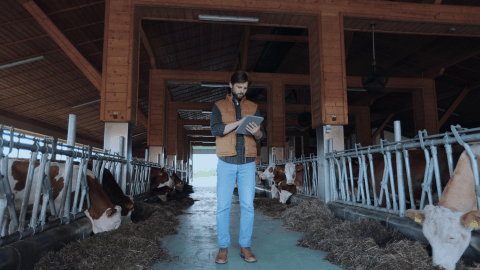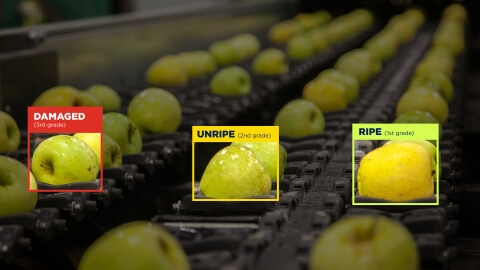Running a livestock farm today means tackling endless challenges on a daily basis. From managing large herds and handling unexpected outbreaks of animal diseases to a shrinking number of employees – traditional manual methods of farming are pushed to their limits.
Gladly, the active digitalization and development of new technologies are transforming the agritech industry. Smart technologies are not just nice-to-have; they are vital for modern farms that want to stay competitive, boost productivity, and increase profitability, all while ensuring the well-being of animals and workers.
Wondering what smart technologies can bring to livestock farming? Explore five primary reasons why you need to adopt them, along with real-world examples of practical implementation.
5 reasons to invest in smart systems now
Here is why livestock farmers need to invest in smart systems:
- Increased productivity
- Improved animal welfare
- Smarter choices with data-driven insights
- Reduced environmental impact
- Maximized profitability
Let’s dive into the details of each benefit!
Increased productivity
The agriculture sector now faces a serious labour shortage. For example, the American Farm Bureau Federation states that around 2.4 million farm jobs need to be filled.
Smart livestock farming systems have the ability to ease the labour crisis by automating labour-intensive and repetitive processes. For example, by handling feeding, weighing, and milking, advanced tech solutions can help one worker manage large numbers of animals simultaneously. Farmers can oversee the work of the technologies remotely using their smartphones, ensuring everything runs smoothly. By automating the farm's operations, smart solutions reduce the reliance on manual labour and enhance the efficiency of the farm, leading to better animal growth and higher yields.
Improved animal welfare
In recent years, the topic of ethical farming has rightfully raised a lot of attention. Incorporating special livestock farming technology allows for a more ethical environment in accordance with animal welfare regulations by early disease detection, alleviating stress, and any discomfort with minimal intervention. Moreover, improved animal welfare guarantees a reduction of potential expenses due to medical reasons and the prevention of production loss.
Smarter choices with data-driven insights
Farming processes automation unlocks a continuous stream of real-time data, providing insights into animal health, feeding efficiency, and their living conditions. The data provides a solid base for farmers to plan future production strategies and identify areas that demand improvement.

Reduced environmental impact
Livestock farming is recognized as one of the reasons for environmental pollution. With more than 16.5 % of greenhouse gases and nearly half of the world’s habitable land used for agriculture, the sector significantly contributes to environmental degradation, from deforestation to water pollution.
Smart tech solutions can help to minimize the negative consequences of livestock farming on the ecology. Using data science capabilities, farmers can monitor their consumption patterns and the results of their activity, improving their daily operations to be more sustainable.
Maximized profitability
Automation of routine tasks and optimized resource usage directly impact the profitability of the farm. Smart livestock farming helps to monitor animals’ growth and eating behavior, leading to healthier cattle and yielding high-quality products. With predictive analytics and real-time data analytics, farmers achieve a high level of control over their livestock and operational efficiency, ultimately gaining more profit while meeting high standards for animal welfare and consumer safety.
Livestock farming technology: Real use cases
So, what do smart livestock farming solutions look like in action? The following examples highlight only a few ways farmers can incorporate smart technologies to solve their everyday challenges, reduce manual labor, and accelerate key processes with data-driven insights.
Portable pig weighing and welfare improvement solution
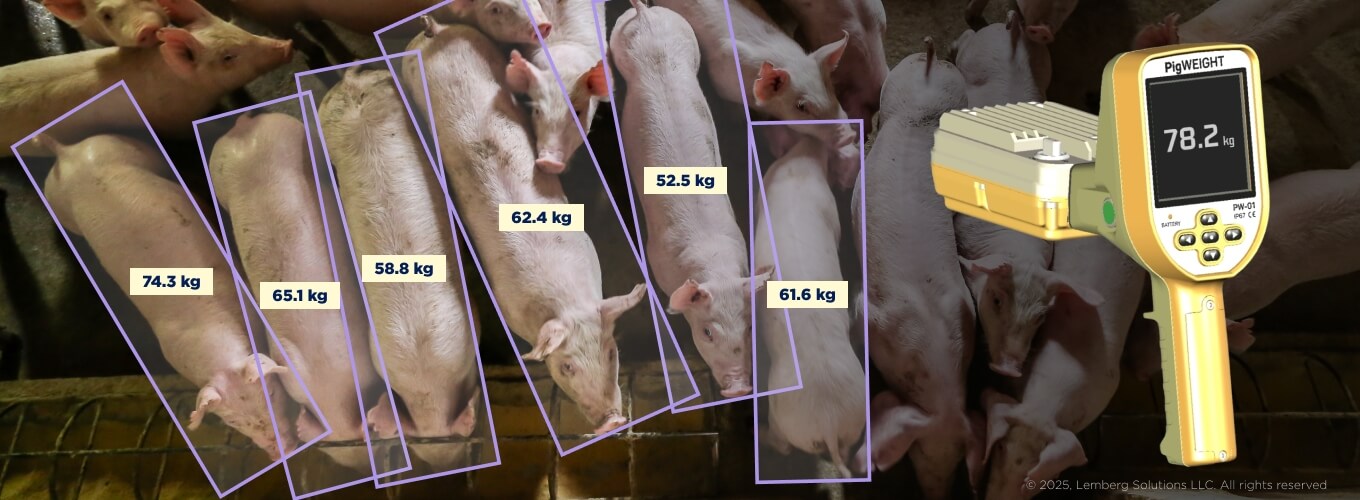
Weighing animals on farms is a daily, time-consuming task. As most existing livestock weighing solutions are stationary, workers must walk the animals to the scale and hold them still, which adds unnecessary stress for both animals and farmers.
The portable computer vision-based solution allows farmers to weigh animals even in motion. All the farmer needs to do is point the device at the animal, and the built-in Intel stereo camera will capture a high-quality 3D image of the animal's body. Due to a special camera, the device can work efficiently even in low-light conditions. Then, the captured picture is processed by a trained neural network, which evaluates the results and sends them directly to farmers' mobile devices for further decisions.

The device reduces manual labor and saves time, as one person can now do the job that used to take a team. More importantly, the solution offers a gentle and ethical way to weigh animals without causing them distress. Now, farmers can focus on more critical tasks like overseeing animals’ health and their feeding systems instead of wasting their time on getting the animals to the scale.
Robotic cattle herding system
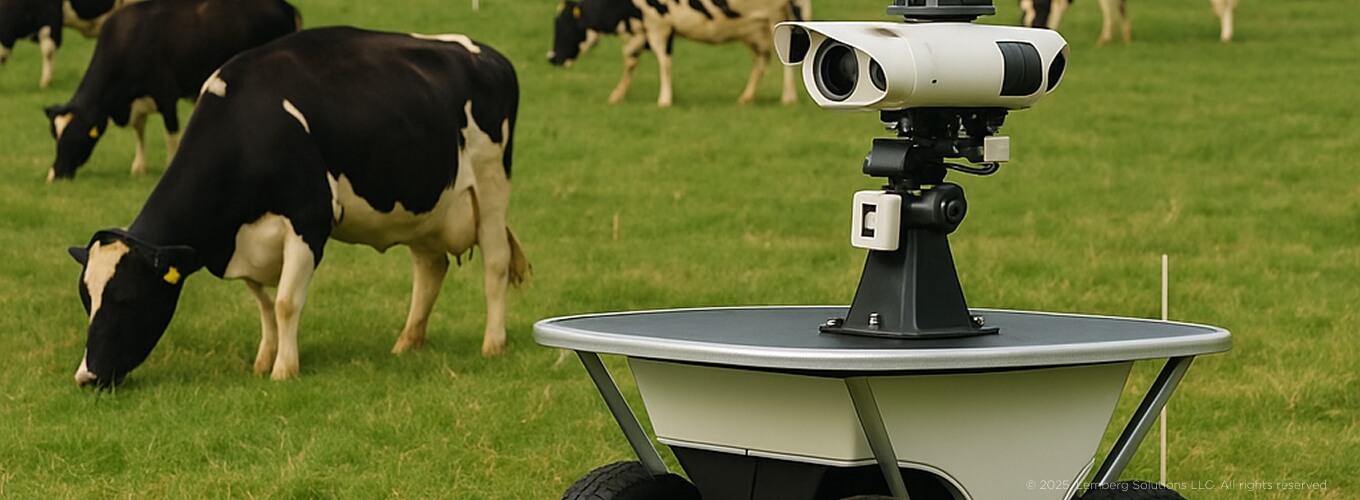
Some farms cover such vast territories that controlling where livestock grazes on the territory is a huge challenge. Lack of proper oversight can lead to two major problems: animal injury and overgrazing, which results in soil damage, reducing its ability to sustain the livestock in the long-term perspective. Addressing this issue can help special cattle herding robots.
Such robots are powered with AI and sensors and programmed to control the cattle within the farm, guiding the animals away from potential dangers, like ditches. Also, this livestock smart farming solution allows for monitoring the health of the cattle, as well as identifying the type and density of the pasture. Using the data about pasture, it guides the cattle to the best areas, also minimizing the possibility of soil degradation.
Automatic feeding system
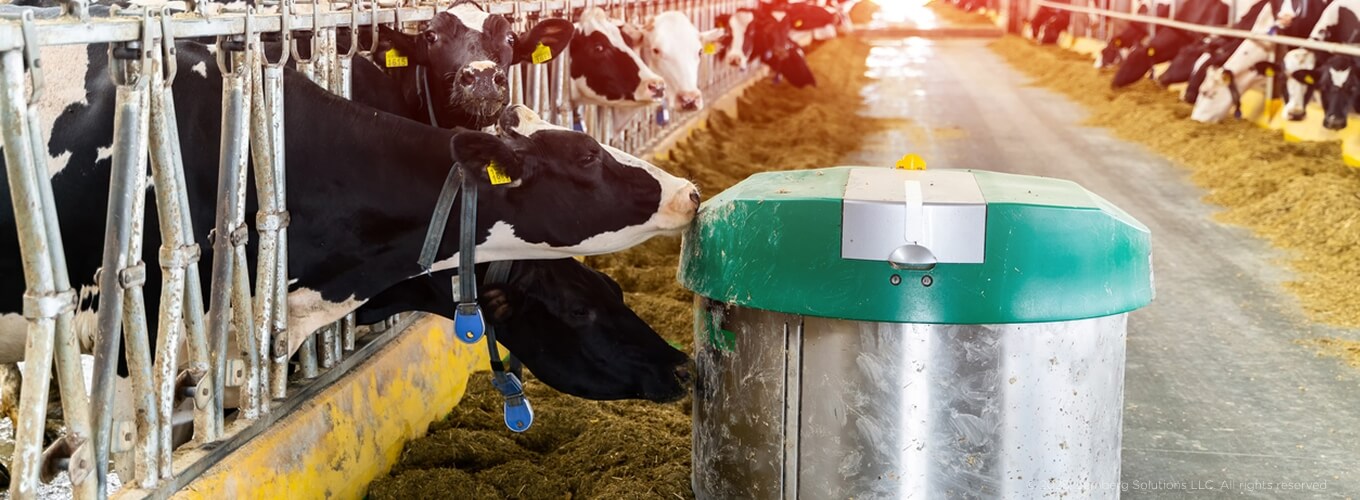
Feeding is a critical aspect of livestock farming. The appropriate feeding schedules and rations impact animal health, and therefore, the farm's profitability. Automatic feeding systems provide a smart livestock farming solution for farmers to deliver the proper portions of food to animals within regular intervals with little to no human intervention.
Leveraging the incorporated software, sensors, and advanced data analytics algorithms, these smart systems calculate the exact amount of nutrient needs of animals by collecting and analyzing data about animal traits like body weight and eating behavior. This way, the system provides insights to the farmers so they can make informed decisions to adjust the diet of the animals, ensuring that every ration is well balanced and based on the specific needs at different stages of the animal’s growth. Then, the feeding system will automatically deliver custom rations for a specific group of animals.
Wearable animal health monitors
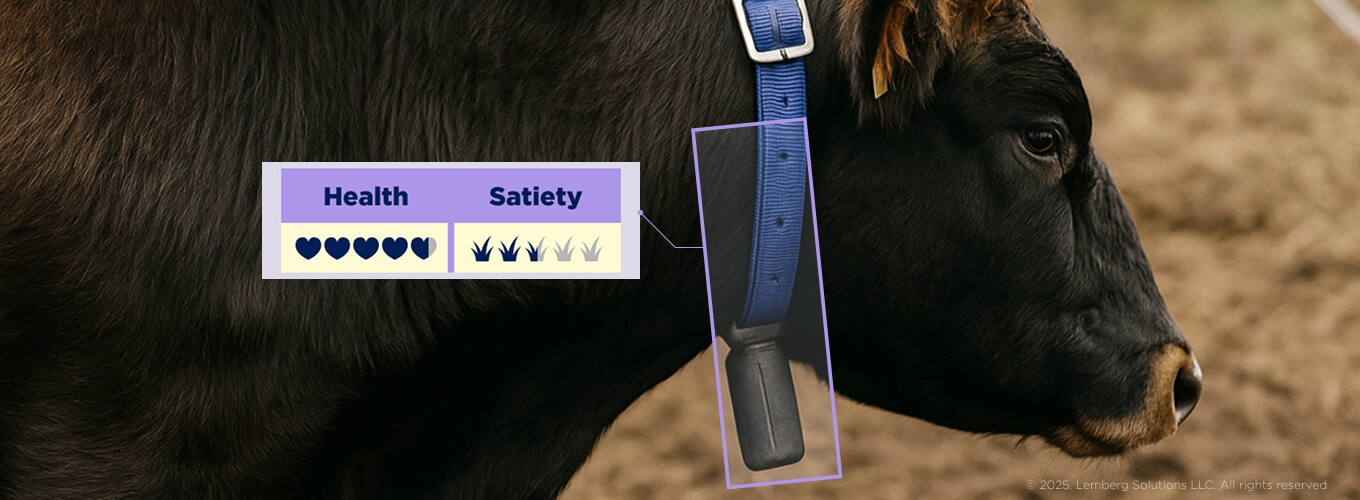
As animals’ health is directly tied to farm efficiency and profitability, early detection of any issues is a top priority for farmers. Wearables are innovative solutions that visualize animals' health data, which help farmers respond to any problems before they become serious.
Such wearable solutions can be incorporated with GPS trackers, thermal sensors, microphones, and cameras to track various biological and behavioral indicators, like movement patterns, temperature, and sound. The collected data is then sent to the cloud server, which is analyzed by advanced algorithms for actionable insights. Wearable solution offers a less invasive, ethical, and efficient way to detect when the animal experiences any discomfort or abnormal change in behaviour.
How to navigate the complexities of smart livestock farming?
While the benefits of smart livestock farming are undeniably convincing, let’s keep it realistic – the road to successful implementation is not that easy. Farmers often face high upfront costs on the way to adopting smart systems. Also, integrating new technologies into existing legacy infrastructure can be technically intricate. If the farms have relied on manual processes for many years, a lack of proper digital infrastructure can also present a significant obstacle on the way to the incorporation of smart livestock farming solutions. On top of that, data privacy and regular system maintenance are often underestimated and ignored, but also present serious challenges when left unattended.
These challenges in smart livestock farming can hinder tech adoption, but they are far from impossible to overcome.
At Lemberg Solutions, we understand both the immense capabilities that smart technologies can bring to livestock farming, but we also know the complexities that come with implementing them. With over 15 years of experience developing smart livestock and agritech solutions for major agricultural companies, we provide full product development services. From initially validating the concept and estimating the resources fit for your case to developing, testing, and integrating the solution into your farm.


